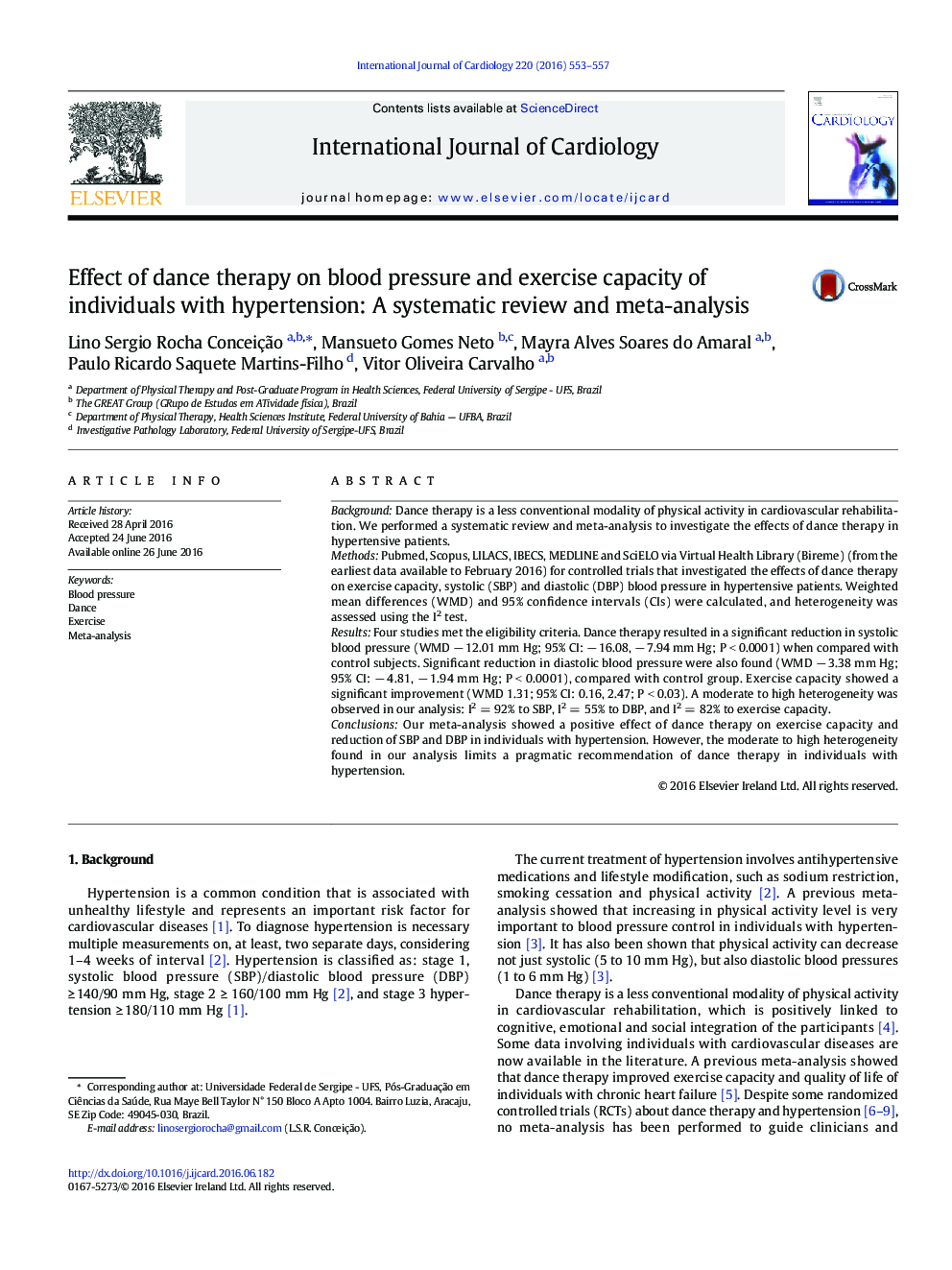| Article ID | Journal | Published Year | Pages | File Type |
|---|---|---|---|---|
| 5963582 | International Journal of Cardiology | 2016 | 5 Pages |
BackgroundDance therapy is a less conventional modality of physical activity in cardiovascular rehabilitation. We performed a systematic review and meta-analysis to investigate the effects of dance therapy in hypertensive patients.MethodsPubmed, Scopus, LILACS, IBECS, MEDLINE and SciELO via Virtual Health Library (Bireme) (from the earliest data available to February 2016) for controlled trials that investigated the effects of dance therapy on exercise capacity, systolic (SBP) and diastolic (DBP) blood pressure in hypertensive patients. Weighted mean differences (WMD) and 95% confidence intervals (CIs) were calculated, and heterogeneity was assessed using the I2 test.ResultsFour studies met the eligibility criteria. Dance therapy resulted in a significant reduction in systolic blood pressure (WMD â 12.01 mm Hg; 95% CI: â 16.08, â 7.94 mm Hg; P < 0.0001) when compared with control subjects. Significant reduction in diastolic blood pressure were also found (WMD â 3.38 mm Hg; 95% CI: â 4.81, â 1.94 mm Hg; P < 0.0001), compared with control group. Exercise capacity showed a significant improvement (WMD 1.31; 95% CI: 0.16, 2.47; P < 0.03). A moderate to high heterogeneity was observed in our analysis: I2 = 92% to SBP, I2 = 55% to DBP, and I2 = 82% to exercise capacity.ConclusionsOur meta-analysis showed a positive effect of dance therapy on exercise capacity and reduction of SBP and DBP in individuals with hypertension. However, the moderate to high heterogeneity found in our analysis limits a pragmatic recommendation of dance therapy in individuals with hypertension.
